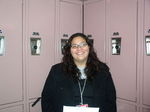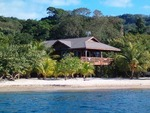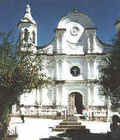Honduras
The heart of Central America
Geography
Honduras is located in the heart of Central America and is bordered by Nicaragua, Guatemala and El Salvador. Its southern coastline is the Caribbean Sea, while its northern is the Pacific Ocean. The majority of Honduran land is more than a thousand feet above sea-level. With mountains covering more than two thirds of the land, Honduras is the most mountainous country in Central America. The landscape covers 43,872 square miles, while the terrain ranges from swamps to savanna. Honduras endures two seasons: a rainy season and a dry season.
Government
Honduras is a democratic constitutional republic. The government is divided into three branches, has three vice-presidents and one president. The majority of Honduras's political history has been controlled by the National and Liberal parties.
Capital " Tegucigalpa
Population -5.1 million
Currency " Lempira
History
Much like the rest of the Latin American countries, Honduras was first inhabited by a variety of native peoples. In Honduras, the Mayans and Lencas were most prominent, though other indigenous inhabitants ca trace their heritage to the Toltec, Aztec, Chibcha and some southwestern American tribes.
Columbus claimed Honduras for the Spanish empire in 1502. It is said that when Columbus reached the eastern coast of Honduras, he came through a storm and found shelter in a cape there, where he exclaimed: "Thank God we've escaped these treacherous depths," or "Gracias a Dios que hemos salido de estas Honduras." The region was thereafter named Honduras and the cape known as Gracias a Dios.
In 1537, Lenca Chief, Lempira, united 30,000 natives in an uprising against the Spanish settlers. The Indians' effort proved successful in fighting off attacks from Spanish soldiers, as well as Guatemalan and Mexican Indians auxiliary troops, and seized three major towns. But when Lempira agreed to peace talks and reaffirmed his will to fight, a hidden gunman shot him. His followers either surrendered or escaped. There were more revolts between this event and the granting of independence of Central America in 1821.
Although Honduras had received independence from Spain, a year later they, along with the rest of Central America, were annexed by Mexico under the empire of Agustin de Iturbide. This was short-lived and, in 1824, the Federation Republic of Central America was created. The Federation was plagued by civil war, power struggles, disagreements between liberals and conservatives and outbreak of disease when Honduras seceded from the Federation in 1838. After this, the country began to thrive industrially, with foreign companies being established and massive banana production taking place. In the midst of all this production, Honduras was still ridden by a civil war that did not end until 1932, through the work of the presidents elected during this time. Since 1954, many social reforms have been made and continue to be advanced towards gaining social and economic stability.
National Flower
The national flower of Honduras is the Orchid (Brassavola Digbiana)
National Anthem
To listen to the Honduran national anthem click here: National Anthem
Tourism
Bay Islands
Santa Rosa de Copan
This historical city can be found in the mountains of western Honduras. Apart from the excellent cigar and coffee available from the city's two factories, Santa Rosa de Copan also hosts many festivals, including that of Santa Rosa de Lima, the patron saint of the city. On Easter, many elaborate processions relating the story of Easter. On Independence Day, the celebrations last three days and kindergarten, elementary and high schools compete to see who can parade in the best uniforms or costumes. Santa Rosa de Copan is also home to the Celaque National Park.
The information about Honduras for this article was gathered form the website of the Honduras Embassy.
Tags: print Cultural Connection
Zahra Gordon. Zahra Gordon is 16-year old JUNIOR at Blair who is overwhelmingly proud of being from the Caribbean twin-island nation of Trinidad & Tobago (and she never fails to mention that). She has been living in Maryland for four years. If you're ever trying to find … More »
Comments
No comments.
Please ensure that all comments are mature and responsible; they will go through moderation.





